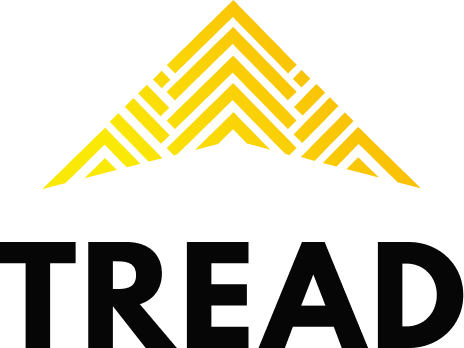Construction Payment Schedule Template [Free Download]
The nature of construction often means that subcontractors are spending money on materials and supplies as the project progresses. They are often waiting for the next payment to pay off these expenses and balance their finances. In many cases, it’s not until the final payment that subcontractors can hope to make a profit.
As the general contractor, slow or partial payments to subcontractors can negatively impact your business relationships and reputation. Implementing a construction payment schedule to pay your subcontractors on time and without dispute will help nurture those relationships and keep project productivity and workflow high.
In this blog, we will discuss construction payment schedules, how to create them, and what should be included. We have also created a free, downloadable construction payment schedule template that you can use in your day-to-day operations or use as a guide to creating your own custom payment schedule.
What is a payment schedule in construction?
A payment schedule in construction is a formalized document—often in the form of an Excel spreadsheet—that allows bookkeeping staff to plan, organize, and schedule subcontractor payments. They are ideal for construction projects of any size and should be used when implementing the progress billing method to pay subcontractors. Both the billing method and payment schedule should be added to every construction contract before the project begins.
Payment schedules ensure subcontractors are paid in a timely fashion, as work is completed, and keep payments moving steadily so vendors can pay off their expenses as the project progresses. They can even help a construction project get completed on time, within budget, and with no financial disputes.
Request a demo today to learn how Tread’s construction fleet management software can help you speed up payments with instant digital invoices and more.
How to create a construction payment schedule
A construction payment schedule can be created as a Word document or as a spreadsheet in Excel. Preference between Word or Excel will depend on your bookkeeping staff but we recommend creating an Excel spreadsheet for your payment schedule and will be focusing on this method in this blog.
When creating your construction payment schedule in Excel, it is important to be detailed, descriptive, and organized. Make sure everyone in your accounting department has access to these documents and that they are backed up securely to avoid disputes.
What should be included in a construction payment schedule?
At the very least, construction payment schedules should include subcontractor information, the services performed, payment amounts, and payment dates. To create a complete and comprehensive payment schedule, we have outlined the specifics on what to include below.
Construction payment schedules should include:
- Subcontractor information
- Services performed
- Payment amount
- Total amount paid
- Payment due dates
- Actual payment dates
- Method of payment
- Notes section
Subcontractor information
The first thing to include in your construction payment schedule is who the payment is being made out to. This includes the subcontractor’s first name, last name, and job title. Your accounting team may want to include additional identifying information such as the subcontractor’s address, contact information, account number, etc.
Services performed
A subcontractor may perform one job on the construction project, while others may perform many. Including a detailed record of the service (or bundle of services) performed in your payment schedule will ensure subcontractors are paid for the work they have done. Having this type of detailed information in your payment schedule can also serve as a secondary document to refer to when looking into the work previously performed and paid for while also helping to eliminate disputes.
Your team may also find it helpful to include the respective completion date for each of the tasks on the payment schedule that are being paid out.
Payment amount
In a column next to the services performed, it is best to include a column that clearly lists the cost for each service. In other words, this represents the amount being paid out for each service.
Since this is a payment schedule, it is also beneficial to include the percentage each service represents towards the full payment’s grand total. This section can also include any deductions or hold-backs relating to that particular contract or subcontractor.
Total amount paid
In a column close to the payment amount, it is helpful to include a column that specifies the actual amount paid to the subcontractor. It is possible that the amount charged is not the amount that gets paid. This is why it’s important to document things like deductions and hold-backs so these discrepancies can be understood by everyone who views these documents.
Listing the total paid price is also how your business will keep its books organized and error-free.
Payment due dates
Be sure to include the payment due dates in your construction payment schedule. Knowing when subcontractor payments are due will keep your payment schedule running smoothly and on-time.
Actual payment dates
There may be instances when payment was made before or after the due date and this needs to be documented for your records to be completely accurate. This may be due to a stat holiday, a delay in work or invoicing, or other unforeseen reasons.
Method of payment
When working with different subcontractors, there will likely be different methods of payment. Some subcontractors will get paid by check, others by direct deposit, and so on. Your payment schedule should record this type of information for complete transactional transparency.
Notes section
It is important to include a section for additional information and notes on the payment schedule. This is a great section to record details if there was a payment amount or date discrepancy and why.
Construction payment schedule template
We’ve put together a free, downloadable construction payment schedule template PDF for your convenience. It includes everything we’ve listed as requirements above and can easily be integrated into your payment scheduling practices.
Download our free construction payment schedule template
Speed up payments and eliminate disputes
An updated and organized construction payment schedule is key to executing an efficient payment process. Using a paperless fleet management software like Tread enhances your existing payment process by speeding up payments and eliminating financial disputes.
Tread’s e-ticketing and paperless timesheet solutions move these types of financial documents online, making the payment process much easier and faster for your accounting department. For example, through Tread’s platform, you can clearly see information like entry and exit, load and dump, and waiting data. As soon as field-generated tickets and timesheets are signed off, this information is uploaded immediately, in real-time to Tread’s platform. Your bookkeeping staff are able to see the proof of work right away for faster payment processing.
Going paperless also means no more lost or illegible tickets and timesheets that once caused delays and discrepancies. It also provides a reliable source of truth of financial documents for all parties to access, further eliminating financial disputes.
Our free eBook How to Get Paid Faster & Eliminate Disputes covers more on best practices in billing and payments. Download the ebook or request a custom demo to see how Tread’s software can help improve your construction payment schedule and more.
Read On

Construction billing methods & best practices
The construction industry is notorious for slow payments, costly overhead, and relying on credit to...

How to Use the Critical Path Method in Construction
Most construction projects are very complex, with many overlapping and connecting tasks. It is...

The importance of data analytics in construction
It feels like every week there’s a new story on the news about how technology is advancing a...

